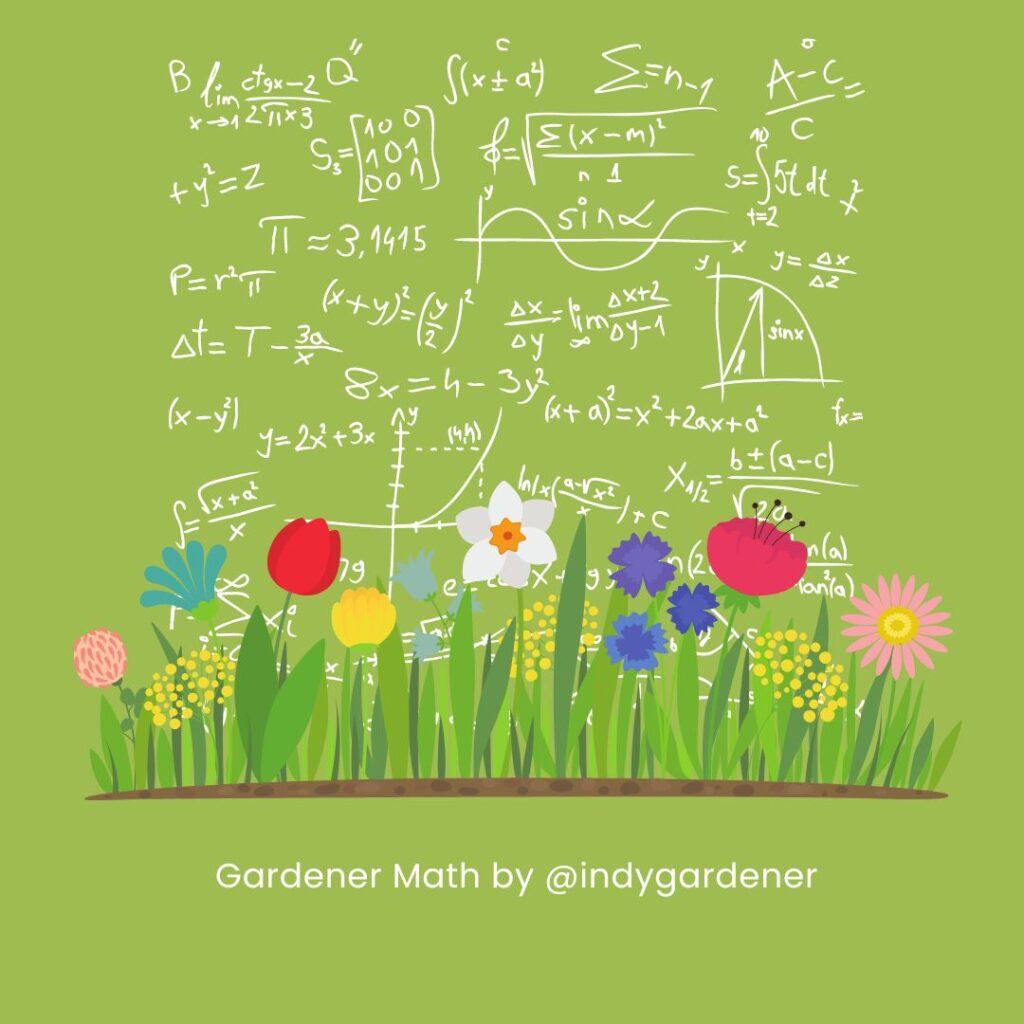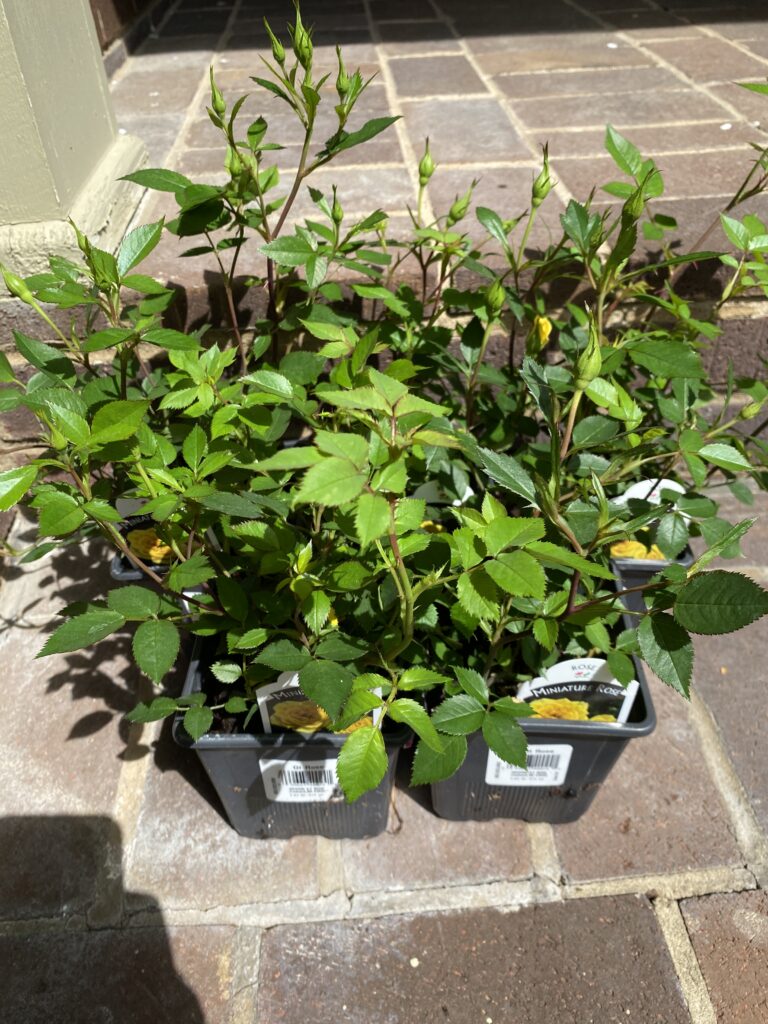
I have two important updates to the information I’ve previously shared about Gardener Math.
I thought of one of the updates when I was shopping for furnace filters at Menards. I have one of those furnaces that uses a big four-inch thick filter that is good for six months. I also pay property taxes every six months, so to remember to change the filter. I do it when I send off that big check in spring and later in the fall.
It’s almost time to send that check/change that filter, which is why I found myself at Menards. “Wouldn’t hurt just to take a quick look at the garden department,” I told myself after putting the filter in my cart. So off I went.
And what did I find? Some miniature yellow roses that I thought were worth a try in my sunny-as-sunny-can-be front garden.
What was the price?
Readers, using my advanced gardener math skills, I figured out the price of those roses and it came out to FREE!
Let me explain, as this is advanced gardener math, though once you understand…
I didn’t go to Menards to buy plants. I went to buy just a furnace filter, meaning that any plants I did happen to buy at the same time actually just increased the cost of the filter and are not included in the amount I spend on plants in the spring.
Honestly, now that I’ve figured out this advanced gardener math concept, I am wondering what else I need from Menards so I can get some of those “free” plants. Light bulbs? Nails? There are endless possibilities.
On to the second update on gardener math, which came to me when I was at the grocery store. Here it is:
When calculating the cost of gardening, never include the cost of anything related to growing vegetables in your gardening budget. All those costs belong in the grocery budget. While this doesn’t make the vegetable garden “free”, per se, it does reduce the amount you spend on gardening. That in turn justifies an increased amount of spending on flowers, trees, shrubs, fancy chairs to sit in out in the garden, etc.
BUT, I bought my new fancy chair mostly to sit in the vegetable garden, so now it’s technically a grocery expense!
And, readers don’t forget that if you bought flowers to lure in pollinators to your vegetable garden, those are also now categorized as groceries.
Now, having moved all those expenses over to the grocery column, when someone asks how much you spend on gardening, you can say, “not that much!”
Isn’t it great how gardener math works, once you understand the key concepts?
Do keep in mind, however, that if you are married to someone who enjoys fishing, he may use this same logic to increase the amount he spends on fancy fishing gear, maybe even a boat, by putting it all under groceries because occasionally, he brings home a tiny fish to eat. Tsk, tsk. Do not allow that, for obvious reasons.
Anyway, those are my two important updates on gardener math.

Let me know if it makes sense to you!


Your Gardener Math is a fascinating logic! I shall keep it in mind when I go to my local department store.
I think Henry Mitchell had an essay about that, along the lines that a garden hose was a household expense, not a gardening expense, because even non-gardeners in the house use the hose.
Being a person that suffers from dyscalculia, which is related to but different from dyslexia, numbers mean nothing to me. Your gardening math is definitely something I can comprehend. Thank you for letting me buy what I want/need in the garden without feeling any guilt.
I have done this in the past.
Here’s a pro tip. Buy buy buy at Menards, turn in the 11% rebates, then go buy more plants with the rebates. Then they are truly free! 🙂
I was coming here to say basically the same thing :^)
Menards rebate math is the best kind of shopping math!